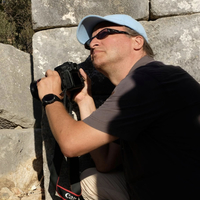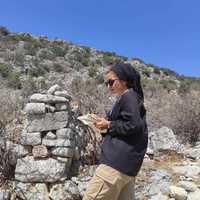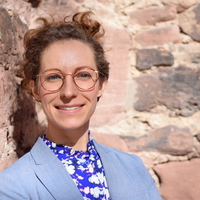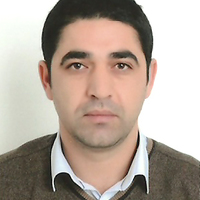
Koray Konuk
Koray Konuk holds a tenured position at the French National Centre for Scientific Research (CNRS) as a Senior Research Associate. His main interests are in the history of early coins as well as the history and archaeology of Caria, a region of southwest Asia Minor.
After studies in Classical Archaeology and Political Science in Louvain followed by a doctoral degree in Oxford, he was appointed as a Curator of ancient coins at the Fitzwilliam Museum and an invited university Lecturer in the Faculty of Classics of Cambridge University.
He has led archaeological field surveys in the Ceramic Gulf in Caria and headed the French archaeological mission at the ancient site of Euromos. Since 2021, he has been involved in the Phoenix Archaeological Project in the Rhodian Peraia as deputy director: https://www.phoenixprojesi.com/en/homepage/
He has been a visiting scholar in Oxford, Istanbul, and at the American Numismatic Society in NYC. He is currently directing a collaborative internet-based project called Historia Numorum Online which aims to record Greek coin types, the current volume being on Carian mints: http://hno.huma-num.fr/.
He is a co-editor of the new Bulletin Numismatique de l’Asie Mineure and of the International Journal of Ancient Mediterranean Studies : Philia; as well as a member of the editorial board of the following academic journals: Anatolia Antiqua (Istanbul), Anadolu (Ankara), Propontica (Samsun), Archaeologia Maeandrica (ARMA, Aydın), Arkeoloji ve Sanat Dergisi (Istanbul).
Supervisors: Prof. C. Howgego
After studies in Classical Archaeology and Political Science in Louvain followed by a doctoral degree in Oxford, he was appointed as a Curator of ancient coins at the Fitzwilliam Museum and an invited university Lecturer in the Faculty of Classics of Cambridge University.
He has led archaeological field surveys in the Ceramic Gulf in Caria and headed the French archaeological mission at the ancient site of Euromos. Since 2021, he has been involved in the Phoenix Archaeological Project in the Rhodian Peraia as deputy director: https://www.phoenixprojesi.com/en/homepage/
He has been a visiting scholar in Oxford, Istanbul, and at the American Numismatic Society in NYC. He is currently directing a collaborative internet-based project called Historia Numorum Online which aims to record Greek coin types, the current volume being on Carian mints: http://hno.huma-num.fr/.
He is a co-editor of the new Bulletin Numismatique de l’Asie Mineure and of the International Journal of Ancient Mediterranean Studies : Philia; as well as a member of the editorial board of the following academic journals: Anatolia Antiqua (Istanbul), Anadolu (Ankara), Propontica (Samsun), Archaeologia Maeandrica (ARMA, Aydın), Arkeoloji ve Sanat Dergisi (Istanbul).
Supervisors: Prof. C. Howgego
less
Related Authors
Asil Yaman
Bryn Mawr College
M. Rumeysa Cakan
Alanya Alaaddin Keykubat University
Aytaç Coşkun
Dicle University
Aslıhan Güçlü
Dokuz Eylül University
Anna M Sitz
Eberhard Karls Universität Tübingen
Erkan Fidan
Bilecik University
Fikret Alkan
Adnan Menderes University
InterestsView All (82)










Uploads
Books by Koray Konuk
This volume brings together 27 papers presented at the ‘Rencontres d’Archéologie de l’IFEA’ devoted in 2013 to the ‘early’ periods of a region of southwest Asia Minor: Caria. Several recent studies have significantly advanced Carian studies, but these have been limited to chronological fields from the Hekatomnids to the end of the Roman Empire. It has therefore seemed useful to propose around a symposium and its publication a state of knowledge for periods prior to the Hekatomnids by offering both archaeologists to present unpublished archaeological material, resulting from recent (often rescue) excavations, and historians to expose their latest reflections based on material already known but reassessed in the light of new discoveries.
lively debate in recent years. In the framework of a program funded by the French National Research Agency (CNRS), a program consisting of philologists, historians, archaeologists and geologists took a model of integration into the larger whole of the Mediterranean the ancient regions of Caria and Lycia.
At the end of this program, a symposium held in Bordeaux provided an update on the progress of our knowledge of indigenous languages, foreign influences in the architecture and funerary practices. In turn, recent archaeological and epigraphic discoveries as well as historical developments underlying them shed light on the dynamism and ability of Caria and Lycia to adapt to political changes in the Mediterranean world.
It is around these two themes, which he contributed widely to enlighten, that thirty-five colleagues, friends and former students from twelve countries have gathered to honour him on the occasion of his retirement by offering twenty-nine studies.
This volume celebrates a scientific career of international standing whose variety of approaches is mirrored by these essays which discuss ancient, social and economic history, historiography, archaeology, epigraphy, metrology and numismatics."
Papers by Koray Konuk
This volume brings together 27 papers presented at the ‘Rencontres d’Archéologie de l’IFEA’ devoted in 2013 to the ‘early’ periods of a region of southwest Asia Minor: Caria. Several recent studies have significantly advanced Carian studies, but these have been limited to chronological fields from the Hekatomnids to the end of the Roman Empire. It has therefore seemed useful to propose around a symposium and its publication a state of knowledge for periods prior to the Hekatomnids by offering both archaeologists to present unpublished archaeological material, resulting from recent (often rescue) excavations, and historians to expose their latest reflections based on material already known but reassessed in the light of new discoveries.
lively debate in recent years. In the framework of a program funded by the French National Research Agency (CNRS), a program consisting of philologists, historians, archaeologists and geologists took a model of integration into the larger whole of the Mediterranean the ancient regions of Caria and Lycia.
At the end of this program, a symposium held in Bordeaux provided an update on the progress of our knowledge of indigenous languages, foreign influences in the architecture and funerary practices. In turn, recent archaeological and epigraphic discoveries as well as historical developments underlying them shed light on the dynamism and ability of Caria and Lycia to adapt to political changes in the Mediterranean world.
It is around these two themes, which he contributed widely to enlighten, that thirty-five colleagues, friends and former students from twelve countries have gathered to honour him on the occasion of his retirement by offering twenty-nine studies.
This volume celebrates a scientific career of international standing whose variety of approaches is mirrored by these essays which discuss ancient, social and economic history, historiography, archaeology, epigraphy, metrology and numismatics."
minting c. 440–430 BC.